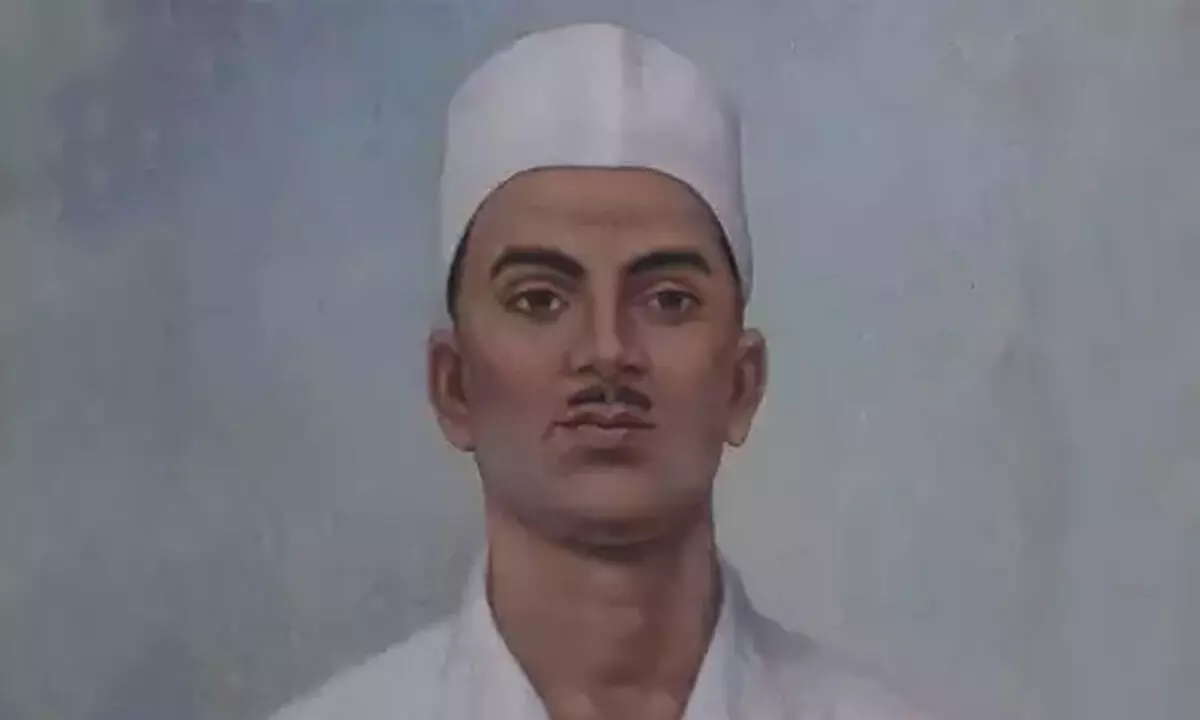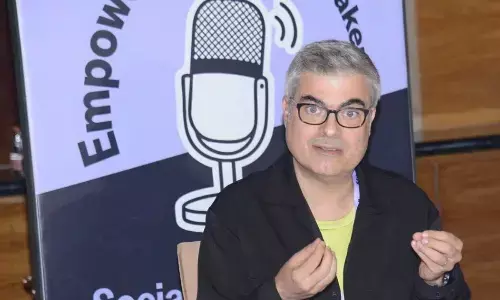The famous Lahore Conspiracy Case: 'Crown versus Sukh Dev and others'

Martyr Sukhdev Thapar, a master strategist
The Lahore Conspiracy Case "Crown versus Sukh Dev and others" had pinned Sukhdev Thapar, born on 15 May 1907 in Naughara Mohalla, old Ludhiana city, as a key conspirator and accused. He was only 22 at the time, alongside fellow martyrs Bhagat Singh and Rajguru, who were around the same age, and many other young accomplices. The incidents leading to the constitution of this case shook the very foundations of British Imperialism in India in the late 1920s during the nation’s freedom struggle. The trio of martyrs was ultimately sentenced to death and hanged on 23 March 1931, while many others received life imprisonments and deportations.
Tracing Sukhdev’s life, it is evident that he was only three years old when his father, a very small businessman named Ram Lal Thapar, passed away. Young Sukhdev was thereafter brought up under the care of his uncle Achintram Thapar in Lyallpur (now in Pakistan). Achintram was a prominent member of civil society there, supporting the freedom movement. His arrest in 1919 and again in 1921 left a deep agitation and resentment in Sukhdev’s mind, committing him to fight against British rule. The families of Sukhdev and Bhagat Singh knew each other. After their schooling, the young lads opted to enroll in National College, Lahore, founded by the famed freedom fighter Lala Lajpat Rai to train young men in social service.
The young brigade relished the spirit of open and free intellectual inquiry, questioning and discussing with their teachers about the world's revolutions vis-à-vis India’s freedom struggle. Their political science professor, Jaichandra Vidyalankar, exerted the greatest influence on them. Besides this, they regularly visited the Dwarkanath Library, also started by Lala Lajpat Rai. The library had an abundance of books on political literature and journals of current affairs, which fascinated them. Bhagat Singh and Sukhdev discussed these books for hours in their rented room. Lahore, being the great epicenter of education and trade in then-undivided Punjab, attracted young talents to the city’s colleges. The freedom movement touched every Indian. These young boys formed a student outfit, Naujawan Bharat Sabha, in March 1926 in Lahore. This organization, entirely socialist and non-religious, saw Sukhdev and Bhagat Singh play an important role in preparing the youth of Punjab to work with them. The elders of these young men already had established connections with the Hindustan Republic Association, formed by Ram Prasad Bismil and others in 1924 in Bengal.
Formation of Hindustan Socialist Republic Association (HSRA)
Lahore-based young revolutionaries began meeting like-minded youth from Uttar Pradesh, Bihar, Rajasthan, and Punjab. In a meeting on 8-9 September 1928 in Delhi, at Ferozeshah Kotla, they announced the formation of the Hindustan Socialist Republic Association (HSRA), adding the word ‘Socialist’ to the original Hindustan Republic Association. Both Bhagat Singh and Sukhdev hated communalism and aspired for a just society. Chandrashekhar Azad was made commander-in-chief of the HSRA. The organization’s character was mutinous against the British government. Recognizing his organizational prowess, Sukhdev, one of their stalwarts, was assigned a key role in Punjab affairs. It was here that they decided to oppose the Simon Commission and start bomb-making units in Saharanpur, Agra, and Lahore.
Revolt against the Simon Commission
The British sent the Simon Commission to India to study the working of the Indian Government under the Government of India Act of 1919, but there were no Indian members on the commission. The Lahore-based Indian political groups and revolutionaries jointly decided to oppose the commission on its arrival at Lahore railway station. On October 30, 1928, Naujawan Bharat Sabha activists, led by Sukhdev and others, joined Lala Lajpat Rai, who came with hundreds of followers. These young men provided Lalaji with a protective cover as the police threatened the demonstrators. However, Lahore Superintendent of Police James A. Scott ordered a lathi charge. Lala Lajpat Rai was brutally beaten by the police, sustaining severe injuries that led to his death. The HSRA vowed to avenge Lalaji's death by killing the police officer responsible, James A. Scott.
J.P. Saunders Assassination
Sukhdev and others studied Scott’s movements for several days. Ultimately, Sukhdev's trusted comrades, Bhagat Singh, Rajguru, Chandrashekhar, and Jaigopal, were assigned the task. On December 17, 1928, the revolutionaries mistakenly killed J.P. Saunders, an Assistant Superintendent of Police, instead of Scott. Head Constable Chanan Singh was also accidentally killed. The youthful revolutionaries pasted handwritten posters in Lahore city declaring, "The death of Lala Lajpat Rai avenged." They then escaped by train with changed identities and regrouped in Agra, Saharanpur, and Delhi.
Delhi Assembly Bomb Incident
In 1929, the British Government in India tried to pass the Trade Disputes Bill and the Public Safety Bill in the Delhi Assembly, aimed at restricting revolutionary activities. HSRA members decided to protest symbolically by exploding two bombs in the Assembly Chamber on April 8, 1929. Bhagat Singh and B.K. Dutt carried out the task, shouting ‘Inquilab Zindabad’ after throwing the bombs. Both were arrested. Sukhdev, upset about Bhagat Singh's arrest, was later arrested along with Pandit Kishori Lal and Jaigopal from their hideouts.
Lahore Conspiracy Case 1929
The police were convinced that Sukhdev was the mastermind behind the revolutionary activities. The FIR, submitted in April 1929, listed Sukhdev as accused number one. The case, known as the 1929 Lahore Conspiracy Case, officially titled "Crown versus Sukhdev and others," brought all arrested revolutionaries, including Bhagat Singh and B.K. Dutt, to Lahore Central Jail. The revolutionaries went on hunger strikes, demanding the same treatment as prisoners of war.
Lahore Conspiracy Case Ordinance, 1930
Though the trial began on July 11, 1929, the proceedings dragged on. On May 1, 1930, Viceroy Irwin passed the Lahore Conspiracy Case Ordinance 91, establishing a Special Tribunal of three judges whose judgement could not be challenged. The tribunal aimed to deliver a swift judgement, culminating in the death sentence on October 7, 1930. The revolutionaries requested to be shot like prisoners of war instead of being hanged, but their request was denied.
Hanging of Martyrs
The executions were initially scheduled for the morning of March 24 but were preponed to the evening of March 23, 1931. Sukhdev's mother and Mathradas Thapar were allowed to see him, but his uncle Chintram was not. Before being taken to the gallows, Sukhdev requested that his carrom board be returned to his family. Sukhdev, Bhagat Singh, and Rajguru were hanged amidst chants of 'Inquilab Zindabad' from other prisoners. The bodies were secretly taken to Ferozepur for cremation on the banks of the Sutlej River, denying the relatives' requests to receive them.
(Brij Bhushan Goyal –A Social Activist & A Sr Citizen)


















